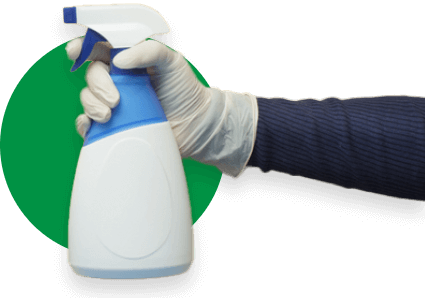Maintaining clean commercial carpet tiles is crucial for several reasons. Regular and thorough cleaning helps prevent the buildup of dirt, allergens, and bacteria, ultimately improving indoor air quality and extending the lifespan of your flooring. This comprehensive guide provides a step-by-step approach, essential tips, and a handy checklist to effectively clean commercial carpet, ensuring your business always looks its best.
Understanding Commercial Carpet Tile Cleaning
Commercial carpet tiles possess several advantages, including their modularity, so replacing damaged patches is easy. The seams, although tight overall, don’t hold dirt and spills. The backing is heavy-duty but will be susceptible to water damage if thoroughly soaked. Issues include heavy traffic lanes, difficult spills and stains, ground-in dirt, and matting in high-traffic areas. Knowing how to clean commercial carpet tiles is an art form in itself. Proper cleaning dissuades premature wear, makes the carpet appear overall sound, and assists in creating a healthier environment.
Tools and Supplies for Effective Carpet Tile Cleaning
The right tools and supplies are paramount for efficiently and effectively cleaning commercial carpet tiles.
1. Commercial-Grade Vacuum Cleaner
Unlike residential vacuums, commercial models are built for durability and sustained use in demanding environments. Look for a strong suction vacuum to lift embedded dirt, dust, and debris from the carpet tile fibers. A beater bar or rotating brush is crucial for agitating the carpet pile, loosening trapped particles, and allowing for more thorough extraction. Investing in a vacuum cleaner equipped with a HEPA filter is highly recommended for optimal hygiene, especially in spaces with high foot traffic or sensitivities. HEPA filters can capture up to 99.97% of airborne particles as small as 0.3 microns, including fine dust, pollen, pet dander, and other allergens, significantly improving indoor air quality for employees and visitors. Consider models with adjustable height settings to accommodate different carpet pile heights and various attachments for cleaning edges, corners, and upholstery.
2. Carpet Extractor (For Deep Cleaning)
A carpet extractor is essential for more intensive cleaning than surface vacuuming. This machine sprays a hot water-based cleaning solution deep into the carpet fibers. Simultaneously, its powerful suction mechanism extracts the dirty water and embedded grime, allergens, and pollutants.
This process effectively removes deep-seated dirt and stains that regular vacuuming cannot reach, revitalizing the appearance and cleanliness of your commercial carpet tiles. Ensure you make overlapping passes to cover the entire surface area and extract as much water as possible to minimize drying time and prevent potential issues like mold and mildew growth.
3. Spot Cleaners
Accidents happen, and having a selection of spot cleaners formulated explicitly for carpets is vital for tackling spills and stains quickly. Keep a variety of spot cleaners on hand to address different types of stains, such as water-based stains (coffee, juice), oil-based stains (grease, ink), and protein-based stains (food, bodily fluids). When a spill occurs, immediate action is key. Blot the affected area gently with a clean, white cloth or paper towel, working from the outside of the stain inward to prevent it from spreading. Then, apply the appropriate spot cleaner according to the product instructions. Avoid pouring the cleaner directly onto the carpet; use it on a cloth first, then gently work it into the stain. Always test a new spot cleaner in an inconspicuous carpet tile area to ensure it doesn’t cause discoloration or damage.
4. Enzymatic Solutions
Enzymatic solutions are a specialized type of cleaner that is particularly effective at breaking down organic matter, a common cause of stains and odors in commercial carpets. These solutions contain enzymes that target and digest proteins, fats, and carbohydrates found in food spills, pet accidents, and other organic contaminants that can aid in disinfecting commercial carpets. Unlike traditional cleaners that may simply mask odors, enzymatic cleaners work to eliminate the source of the problem at a molecular level.
Experts often recommend enzymatic solutions for persistent or recurring odors. Saturate the affected area with the enzymatic solution, ensuring thorough coverage. As suggested by the product instructions, allow the enzymes sufficient dwell time to work effectively before you blot or extract the residue.
5. Carpet Brushes
A good set of carpet brushes makes a valuable addition to your cleaning toolkit. Use these brushes to agitate the carpet fibers, which helps loosen embedded dirt and lift stains during the spot-cleaning process. Different carpet brushes are available, ranging from soft-bristled brushes for general agitation to stiffer-bristled brushes for tackling more stubborn stains. Apply gentle, circular motions to work the cleaning solution into the carpet fibers when using a carpet brush. Avoid scrubbing too vigorously in a back-and-forth motion, as this can damage the fibers and distort the carpet’s texture. Carpet brushes are handy for working in spot cleaners or enzymatic solutions for more effective stain removal.
6. Carpet Tile Adhesive Releaser (For Replacements)
Replacing individual damaged tiles is a significant advantage in commercial spaces with carpet tiles. A carpet tile adhesive releaser is a specialized product designed to soften the adhesive that holds the carpet tile to the subfloor. The releaser makes it easier to lift and remove a damaged tile without causing damage to the surrounding tiles or the subfloor. The releaser typically comes in a spray form. Apply it around the edges of the damaged tile and allow it to sit for the recommended time according to the product instructions. This will loosen the adhesive, allowing you to lift the tile using a utility knife or pry tool. Having this product on hand ensures a seamless and professional-looking replacement process.
Proper commercial carpet cleaning often yields better results because they have access to more powerful, commercial-grade cleaning supplies and equipment specifically designed for the demands of commercial carpet tiles.
Maintaining clean commercial carpet tiles can be challenging. Learn how our professional services can help.
Step-by-Step Guide to Cleaning Commercial Carpet Tiles
Here’s a breakdown of how to clean commercial carpet tiles effectively:
1. Daily Maintenance
Vacuuming:
Vacuum all carpeted areas daily, paying extra attention to high-traffic zones like entrances and walkways. Use overlapping strokes to ensure thorough dirt removal. Utilize attachments to clean edges and corners. Emphasize the importance of using a vacuum with strong suction and a beater bar suitable for carpet tiles to lift embedded debris.
Spot cleaning:
Respond to spills and stains immediately. Blot the spill with a clean cloth or paper towel, working from the outside to prevent spreading. Apply an appropriate carpet spot cleaner according to the product instructions. For greasy stains, an enzymatic cleaner may be necessary.
2. Weekly Deep Cleaning
Low-moisture methods (Encapsulation cleaning):
This method involves applying a specialized cleaning solution that encapsulates dirt particles. After it dries, you can easily vacuum away the encapsulated soil. It offers an excellent option for quick drying and minimal disruption.
Hot water extraction:
Use a carpet extractor for a more thorough, deep clean. Follow the manufacturer’s instructions carefully. Ensure proper water extraction to minimize drying time and avoid overwetting. Adequate drying time is crucial to prevent mold and mildew growth. Avoid overwetting carpet tiles, which can damage the backing and potentially loosen the adhesive.
3. Monthly & Seasonal Maintenance
Carpet and Hard Surface Tiles:
Consider scheduling professional cleaning services for your carpet tiles monthly or quarterly, depending on the level of foot traffic and your business’s specific needs. Professionals have the equipment and expertise to perform a more intensive clean.
Tips for preventing mold, mildew, and odors:
Ensure proper ventilation in your commercial space, especially in damp areas. Promptly address any water leaks. After cleaning, ensure the carpet tiles are completely dry.
Inspecting and replacing damaged carpet tiles:
Regularly inspect your carpet tiles for signs of wear and tear, such as fraying, stains that cannot be removed by regular cleaning, or damage. Promptly replace damaged tiles to maintain the overall appearance and prevent tripping hazards.
Essential Checklist for Commercial Carpet Tile Cleaning
Use this checklist to ensure consistent and effective cleaning of your commercial carpet tiles:
✅ Daily Maintenance
- [ ] Vacuum all carpeted areas thoroughly.
- Pay special attention to high-traffic zones like entrances, hallways, and near doorways.
- Use overlapping strokes to ensure complete coverage.
- Utilize vacuum attachments to clean along edges, in corners, and under furniture.
- [ ] Spot-clean all spills immediately.
- Blot the spill from the outside with a clean white cloth or paper towel.
- Apply an appropriate carpet spot cleaner according to the product instructions.
- For greasy or organic stains, consider using an enzymatic cleaner.
- Avoid rubbing the stain, as this can spread it.
✅ Weekly Deep Cleaning
- [ ] Perform a deep clean using either a carpet extractor or an encapsulation cleaner.
- Carpet Extractor:
- Follow the manufacturer’s instructions for solution mixing and machine operation.
- Focus on high-traffic areas and visibly soiled spots.
- Make overlapping passes to ensure thorough cleaning and extraction.
- Ensure adequate ventilation during and after cleaning to promote drying.
- Encapsulation Cleaner:
- Apply the solution evenly according to the product instructions.
- Allow sufficient drying time before vacuuming up the encapsulated soil.
- Vacuum thoroughly to remove all residue.
- Carpet Extractor:
✅ Monthly & Seasonal Maintenance
- [ ] Schedule professional commercial carpet cleaning services.
- Assess the overall condition of your carpets to determine the frequency (monthly, quarterly, or as needed).
- Book appointments with a reputable professional cleaning service like Dallas Janitorial Services.
- [ ] Inspect all carpet tiles for wear and tear.
- Check for fraying edges, loose fibers, or signs of excessive wear in high-traffic areas.
- Identify any stubborn stains that require extra attention or professional treatment.
- Look for any damaged tiles (tears, significant discoloration).
- [ ] Replace damaged carpet tiles promptly.
- Use a carpet tile adhesive releaser if necessary to loosen the damaged tile.
- Ensure the replacement tile matches the existing pattern and color.
- Secure the new tile firmly in place.
- [ ] Check for and address any lingering odors.
- If you notice persistent odors, consider using an enzymatic cleaner or consulting a professional cleaning service for specialized odor removal treatments.
- [ ] (Seasonal – e.g., Quarterly): Perform a thorough inspection under furniture and in less frequently accessed areas.
- Ensure these areas are also adequately cleaned and free from dust and debris.
Common Mistakes to Avoid
Avoiding these common mistakes will help you maintain your commercial carpet tiles effectively and prevent damage:
1. Over-wetting Carpet Tiles
Over-wetting commercial carpet tiles is a significant concern that can lead to several problems. When excessive moisture penetrates the carpet fibers and backing, it creates an ideal environment for mold and mildew growth. These microorganisms can cause unpleasant odors and pose health risks to building occupants. Furthermore, excessive water can seep down to the adhesive layer, potentially causing the adhesive to weaken or even fail, resulting in loose or shifting carpet tiles. To avoid improper carpet cleaning, always ensure your carpet extractor is used correctly with proper suction to remove as much water as possible. Allow adequate drying time after cleaning, and consider using fans or dehumidifiers in poorly ventilated areas to speed up the process.
2. Using Harsh Chemicals
Using cleaning chemicals that are not specifically designed for commercial carpet tiles can cause significant damage. Harsh chemicals can damage the carpet fibers, leading to discoloration, weakening, and a breakdown of the fiber structure. Using harsh chemicals can result in a faded or worn appearance and shorten the lifespan of your carpet tiles. Using the wrong chemicals may also void the manufacturer’s warranty on your carpet tiles. Always refer to the carpet tile manufacturer’s recommendations for approved cleaning products. Opt for pH-neutral cleaners or those formulated explicitly for commercial carpet fibers. When in doubt, test the cleaner in an inconspicuous area first to ensure it doesn’t cause any adverse reactions.
3. Scrubbing Stains Too Hard
When faced with a stubborn stain, the instinct might be to scrub vigorously. However, scrubbing stains too hard can damage the fibers of your commercial carpet tiles. This aggressive action can distort the fiber structure, leading to a matted or fuzzy appearance in the affected area. Forceful scrubbing can sometimes spread the stain further by pushing it deeper into the carpet or across a wider area. Instead of scrubbing, focus on gentle blotting with a clean cloth or paper towel to absorb as much of the spill as possible. Then, apply an appropriate cleaning solution and allow it to dwell for the recommended time before gently blotting again. Use a carpet brush with soft bristles for gentle agitation if needed.
4. Skipping Routine Maintenance
Neglecting routine maintenance is a common mistake that can negatively affect your commercial carpet tiles in the long term. Skipping daily vacuuming, in particular, allows dirt, dust, and debris to accumulate deep within the carpet fibers. These particles can act like sandpaper, causing abrasive damage to the fibers over time as people walk across the carpet. The neglect leads to premature wear and tear, making the carpet look dull and worn out much faster. Furthermore, accumulated dirt makes deep cleaning commercial carpets less effective. Establishing a consistent vacuuming schedule, especially in high-traffic areas, is crucial for preserving the appearance and longevity of your carpet tiles.
5. Using the Wrong Type of Vacuum or Beater Bar
Using the wrong vacuum cleaner or an inappropriate beater bar setting can damage commercial carpet tiles. Some carpet tiles, particularly those with a loop pile construction, can be snagged or damaged by vacuums with overly aggressive or stiff beater bars. Vigorous agitation can pull or fray the loops, leading to an unsightly appearance. Always check the carpet tile manufacturer’s recommendations for the type of vacuum cleaner and beater bar settings suitable for your specific carpet tile style. Many commercial vacuums have adjustable height settings or the option to turn off the beater bar, which can benefit more delicate carpet constructions. Using the correct vacuum will ensure effective cleaning without causing unnecessary damage.
Mastering Commercial Carpet Tile Maintenance
Consistent cleaning and maintenance are the keys to keeping your commercial carpet tiles looking their best, ensuring a hygienic environment, and prolonging their lifespan. Businesses can maintain a professional and welcoming space by implementing a regular cleaning schedule and utilizing the checklist provided.
Trust the experts for consistently clean and well-maintained commercial carpet tiles. Contact Dallas Janitorial Services for a free consultation and customized cleaning plan.
Professional Carpet Tile Cleaning FAQs
What is the best way to clean carpet tiles?
The best way to clean carpet tiles is to combine regular vacuuming (daily or more often in high-traffic areas) with periodic deep cleaning using either a low-moisture encapsulation method for quick drying or hot water extraction for a more thorough clean. Prompt spot-cleaning of spills is also crucial.
Can you steam-clean commercial carpet tiles?
Use hot water extraction (often called steam cleaning) on commercial carpet tiles, but ensure you apply the proper technique and avoid overwetting. Excessive moisture can damage the backing and adhesive. Perform thorough water extraction and allow adequate drying time to prevent mold and mildew.
Can carpet tiles be shampooed?
Carpet shampooing involves applying a detergent solution and then rinsing; it is generally not the preferred method for commercial carpet tiles. It can leave behind residue that attracts dirt and may lead to overwetting. Low-moisture methods like encapsulation or careful hot water extraction are usually more effective and safer for carpet tiles.







